
සෞඛ්ය හා ශාරීරික අධ්යාපනය
- Subject:
- Health, Medicine and Nursing
- Material Type:
- Homework/Assignment
- Author:
- Rasika.M. Perera
- Date Added:
- 04/28/2021

සෞඛ්ය හා ශාරීරික අධ්යාපනය
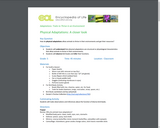
Students explore the adaptations that allow beavers to thrive in aquatic environments, then make observations and inferences about the functions of diverse bird beaks.

The first video segment presents a canonical mathematical example from quantitative biology, in which mRNA is transcribed from a gene sequence, and protein is translated from mRNA. The second segment uses eigenvector-eigenvalue analysis to sketch the trajectories of the system in a phase portrait. Finally, the third segment generalizes the linear stability analysis used to study this example.
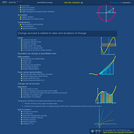
The purpose of the first part of this video is to introduce the idea of summation and its notation using the Greek-letter Sigma. We practice working with sums by using Gauss's summation trick. In the second part of the video, we study examples of infinite series, one which converges to a finite number (geometric series), and one which diverges (harmonic series).
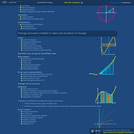
To continue our discussion of derivatives from preceding videos, we explain that the second derivative represents curvature. By combining knowledge of multiple derivatives, we can sometimes create Taylor series, which are local approximations of functions. As an example, we Taylor-expand sinusoidal functions and then use the results to iteratively approximate pi.
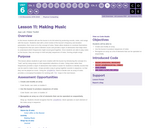
In this lesson students will use the buzzer to its full extent by producing sounds, notes, and songs with the buzzer. Students start with a short review of the buzzer's frequency and duration parameters, then move on to the concept of notes. Notes allow students to constrain themselves to frequencies that are used in Western music and provide a layer of abstraction that helps them to understand which frequencies might sound good together. Once students are able to play notes on the buzzer, they use arrays to hold and play sequences of notes, forming simple songs.
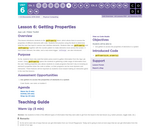
This lesson introduces students to the `getProperty` block, which allows them to access the properties of different elements with code. Students first practice using the block to determine what the user has input in various user interface elements. Students later use `getProperty` and `setProperty` together with the counter pattern to make elements move across the screen. A new screen element, the slider, and a new event trigger, `onChange`, are also introduced.
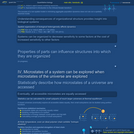
In this deterministic cellular automata model, interactions between neighboring automata are described using a prisoner's dilemma. Limiting dispersal of seeds of annual plants can permit heterogeneous co-existence, whereas thorough mixing instead allows one subpopulation to dominate quickly.
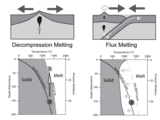
These “Lecture Tutorials” are designed as illustrative review of individual lectures, followed with a series of questions aimed at addressing student misconceptions. 'Think Deeper' sections Foster personal connections to subject matter, and promote discussion. The general idea is that you lecture for 15-20 minutes, the students work through the lecture tutorials for 15-20 minutes, then the class discusses the answers together. These offer a consistent active learning formative assessment, and also act as study guides for students.
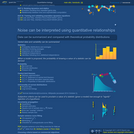
In the first video segment, we analyze the population dynamics for a test-tube of cells that affect each others' likelihoods of replication when they collide. The particular example we use is a prisoner's dilemma, which has the almost paradoxical property that survival of the relatively most fit leads overall fitness to decrease. In the second video segment, we suggest that the population dynamics from the first segment can be related to an analysis that uses payoff matrices found in traditional game theory.
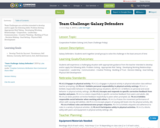
Team Challenges are activities intended to develop and/or apply the following skills: Problem Solving - Appropriate Risk Taking - Developing Working Relationships - Cooperation - Leadership - Communication - Creative Thinking - Building of Trust - Decision Making - Goal Setting - Physical Skill Development
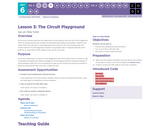
In this lesson students get their first opportunity to write programs that use the Circuit Playground. After first inspecting the board visually and hypothesizing possibly functionalities, students move online where they will learn to write applications that control an LED. By combining App Lab screens with the Circuit Playgrounds, students can gradually start to integrate elements of the board as an ouput device while relying on App Lab for user input.
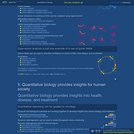
We use eigenvector-eigenvalue analysis to walk through a simple quasispecies model described in Bull, Meyers, and Lachmann, "Quasispecies made simple," PLoS Comp Biol, 1(6):e61 (2005). The dominance of a genotype depends, not merely on its ability to breed quickly (i.e. the rudimentary concept of survival of the fittest), but also on its ability to breed "true."
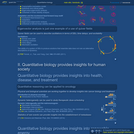
In this video, we use direction fields (drawn as quiver plots) to illustrate the numerical integration of differential equations. We include a heuristic example of how one might try to adapt step size by comparing different orders of approximation.

CC BY license. Please incude in attribution Clayton State Univeristy and ALG https://www.affordablelearninggeorgia.org/
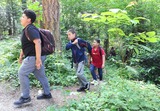
This resource from SHAPE Washington offers a five-lesson unit plan for Hiking. The unit focuses on hiking activities that can be implemented into the Physical Education classroom that align with the state standards.Lesson adaptations are suggested that incorporate inclusionary activities and meet the needs of students with disabilities.
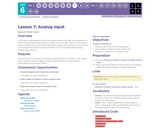
In this lesson, students explore how the three analog sensors (sound, light, and temperature) can be used to write programs that respond to changes in the environment. The use of these sensors marks a transition in terms of how users interact with a program. By using sensors as an input, the user of an app doesn't have to directly interact with it at all, or may interact without actually realizing they are doing so.
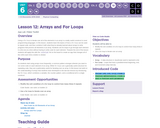
Using a _for loop_ to iterate over all of the elements in an array is a really useful construct in most programming languages. In this lesson, students learn the basics of how a _for loop_ can be used to repeat code, and then combine it with what they've already learned about arrays to write programs that process all elements in an array. Students use for loops to go through each element in a list one at a time without having to write code for each element. Towards the end of the lesson students will apply this with the `colorLed` list on the board to create an app that changes all of the LEDs each time a button is clicked.
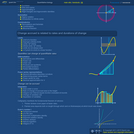
Students will see how the idea of a limit can be presented both in formal epsilon-delta-style terms, and using corresponding animations. After calculating a limit for a simple example function, we point out that limits do not always exist.
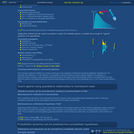
In the first video segment, we study the distribution, average, and variance for the Bernoulli coin-toss process. The binomial distribution results from stringing together a series of coin tosses. In the second segment, we study the limit of "rare" events, which is described by the Poisson distribution.